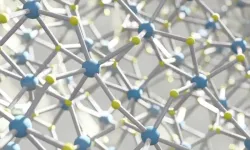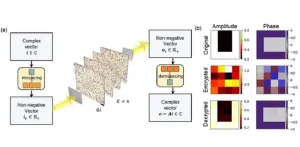(Press-News.org) Genetic changes or mutations can cause hereditary kidney disease, which can eventually lead to dialysis or the need for kidney transplantation. Identifying the cause of inherited kidney disease is the first step in identifying a treatment.
With that goal in mind, researchers at Wake Forest University School of Medicine and the First Faculty of Medicine of Charles University in Prague, Czech Republic, have discovered a new genetic cause of inherited kidney disease.
The findings were recently published in Kidney International.
According to Anthony J. Bleyer, M.D., professor of nephrology at Wake Forest University School of Medicine and corresponding author of the study, the mutations were found in a gene that encodes a protein involved in lipid transport. The mutations cause the lipoprotein to deposit in the middle (medulla) of the kidney, leading to chronic kidney disease.
Bleyer has studied families with inherited kidney disease for the past 20 years and has collected DNA from more than 500 families. While the genetic cause of kidney disease has been found in most of the families, some families remain unresolved.
For the past 10 years, Bleyer has also collaborated closely with Stanislav Kmoch, Ph.D., from the First Faculty of Medicine of Charles University.
“Through our work with Dr. Bleyer and Wake Forest University School of Medicine, we’ve now identified a total of five different causes of inherited kidney disease that affect thousands of individuals," Kmoch said.
In the present study, the researchers identified a mutation in the APOA4 gene, a gene that encodes the protein APOA4 that carries lipids in the circulation, as a cause of kidney disease in these families.
“We were really surprised that a mutation in a protein carrying lipids would lead to kidney disease,” Kmoch said.
For this study, researchers collected DNA samples from a large family from New England. Kmoch compared the DNA of affected family members vs. unaffected family members.
“When we analyzed the DNA, we found a small change in the APOA4 gene that was present in the affected individuals that was not present in the unaffected family members. We were surprised because APOA4 is expressed in the intestinal epithelium and not in the kidney. We then examined the DNA samples from our other unsolved families and found two families that had the same mutation,” Kmoch said.
After finding the mutation in one family in New England, Kmoch scanned the Wake Forest registry and found another family in New England with the same mutation, as well as a patient from a family in eastern Canada. Bleyer and Kmoch then began collaborating with Andrew Orr, M.D., a geneticist and associate professor of ophthalmology of the Faculty of Medicine, Dalhousie University, Halifax, Nova Scotia, who had extensively characterized the family in eastern Canada. Through genetic testing, the researchers determined that the three families are distantly related.
In addition, there were two other families from the Wake Forest registry that were found to have a different mutation in APOA4. In all five families, family members who had the change in the APOA4 gene had kidney disease, while those who did not have the mutation did not have kidney disease.
To determine how the APOA4 mutations caused disease, the investigators analyzed protein deposits (amyloid) that were found in the middle of the kidney on previous biopsies from affected individuals.
These deposits were analyzed by scientists led by Nelson Leung, M.D., from the Mayo Clinic in Rochester, Minn., and found to contain the abnormal APOA4 protein. Computer modeling of the mutated proteins revealed that the mutations cause the protein to be unstable and prone to agglomeration. The investigators showed that while the normal APOA4 protein is filtered by the blood and reabsorbed back into the body or excreted in the urine, the mutant protein tends to stick together and deposit in the medulla of the kidney. This slow accumulation of protein leads to slowly progressive chronic kidney disease.
Bleyer also noted that much of the previous work on the structure and function of APOA4 had been carried out by Richard Weinberg, M.D., professor of internal medicine at Wake Forest University School of Medicine,
“Dr. Weinberg studied APOA4 for more than 30 years,” Bleyer said. “His help was instrumental in understanding the pathophysiology of this newly identified disease.”
The investigators are also interested in seeing whether dietary interventions are effective in lowering the production of the abnormal protein to prevent the progression of kidney disease, but additional research is needed, Bleyer said.
"While inherited kidney disease can lead to the need for dialysis or the need for kidney transplantation, many families do not know the cause,” Bleyer said. “We are committed to helping these families.”
Families with unidentified causes of inherited kidney disease are encouraged to contact the research team at kidney@wakehealth.edu.
END
Scientists identify mutations that cause inherited kidney disease
2024-01-22
ELSE PRESS RELEASES FROM THIS DATE:
How the brain responds to reward is linked to socioeconomic background
2024-01-22
MIT neuroscientists have found that the brain’s sensitivity to rewarding experiences — a critical factor in motivation and attention — can be shaped by socioeconomic conditions.
In a study of 12 to 14-year-olds whose socioeconomic status (SES) varied widely, the researchers found that children from lower SES backgrounds showed less sensitivity to reward than those from more affluent backgrounds.
Using functional magnetic resonance imaging (fMRI), the research team measured brain activity as the children played a guessing game in which they earned extra money for each correct ...
New reagent improves the process of making sulfur-containing compounds that may be used in medicines
2024-01-22
During the past decade, there has been significant development of new sulfur containing compounds that are used in various industries, including pharmaceuticals and agricultural products. Sulfoximines, sulfonimidoyl fluorides and sulfonimidamides are types of sulfur-containing chemical compounds that have wide-ranging potential as therapeutic drugs. However, the synthesis process for these compounds is complex and has several limitations. In a new article published in Nature Chemistry, Moffitt Cancer Center researchers describe their ...
New candidate for universal memory is fast, low-power, stable and long-lasting
2024-01-22
We are tasking our computers with processing ever-increasing amounts of data to speed up drug discovery, improve weather and climate predictions, train artificial intelligence, and much more. To keep up with this demand, we need faster, more energy-efficient computer memory than ever before.
Researchers at Stanford have demonstrated that a new material may make phase-change memory—which relies on switching between high and low resistance states to create the ones and zeroes of computer data—an improved option for future AI and data-centric systems. ...
Follow the salt: connecting salt concentrations and motion in roundworms
2024-01-22
Joint research led by Ayaka Matsumoto and Yuichi Iino of the University of Tokyo demonstrated that temporal decrease in salt concentration leads to the activation of the neck motor neuron of roundworms only in a specific phase of its activity. The activation adjusts the roundworm's trajectory toward higher salt concentrations. The finding pinpoints the neural mechanism by which roundworms integrate sensory and motor information, a first step toward understanding the neural mechanisms of navigation in more complex animals. The findings were published in the journal Proceedings ...
Planetary Commons: Fostering global cooperation to safeguard critical Earth system functions
2024-01-22
“Stability and wealth of nations and our civilisation depends on the stability of critical Earth system functions that operate beyond national borders. At the same time, human activities push harder and harder on the planetary boundaries of these pivotal systems. From the Amazon rainforest to the Greenland ice masses, there are rising risks of triggering irreversible and unmanageable shifts in Earth system functioning. As these shifts affect people across the globe, we argue that tipping elements should be ...
Manipulated hafnia paves the way for next-gen memory devices
2024-01-22
EMBARGOED: NOT FOR RELEASE UNTIL 3:00 P.M. U.S. EASTERN TIME ON JANUARY 22, 2024
Scientists and engineers have been pushing for the past decade to leverage an elusive ferroelectric material called hafnium oxide, or hafnia, to usher in the next generation of computing memory. A team of researchers including the University of Rochester’s Sobhit Singh published a Proceedings of the National Academy of Sciences study outlining progress toward making bulk ferroelectric and antiferroelectric hafnia available for use in a variety of applications.
In a specific crystal phase, hafnia exhibits ferroelectric properties—that is, electric polarization that can be changed in one direction ...
Optical computing boost with diffractive network advance
2024-01-22
State-of-the-art neural networks heavily rely on linear operations, such as matrix-vector multiplications and convolutions. While dedicated processors like GPUs and TPUs exist for these operations, they have limitations in terms of power consumption and bandwidth. Optics is better suited for such operations because of its inherent parallelism, large bandwidth, and computation speed.
Diffractive deep neural networks (D2NN), also known as diffractive networks, constitute an emerging optical computing architecture. ...
Wake Forest Institute for Regenerative Medicine (WFIRM) to lead $40 Million initiative for AFIRM Consortium
2024-01-22
Winston Salem, NC – January 22, 2024 - The Wake Forest Institute for Regenerative Medicine, part of Wake Forest University School of Medicine, has been selected to lead the Armed Forces Institute of Regenerative Medicine (AFIRM) Consortium. The project - a $40 million, five year-long award from the Defense Health Agency (DHA) - will focus on taking regenerative medicine solutions for battlefield injuries to the next level, and ultimately to the general public.
Regenerative medicine is a science that takes advantage of the body's natural abilities to restore or replace damaged tissue and organs. WFIRM has managed two prior AFIRM consortia since ...
Argonne National Laboratory flexes capabilities with receipt of four nuclear innovation vouchers
2024-01-22
A decade that began with a global shutdown is a third of the way done. Its finale — a major deadline for reducing U.S. carbon emissions to slow climate change — approaches at the usual clip. With the decade’s halfway mark in view, the U.S. Department of Energy (DOE) Gateway for Accelerated Innovation in Nuclear (GAIN) awarded seven new vouchers to companies and national laboratories working to develop and commercialize clean nuclear energy projects. Nuclear energy is considered central to efforts to minimize carbon emissions and still reliably meet rising ...
Strategy to boost prostate cancer treatment efficacy devised at Rutgers Health
2024-01-22
Rutgers researchers can predict which patients will benefit from a popular prostate cancer drug – and have devised a strategy that may make the treatment work longer.
“This work should help doctors know which patients’ prostate cancers will and won’t respond to the androgen deprivation therapy enzalutamide, which can slow prostate cancer growth by disrupting androgen receptor signaling,” said Antonina Mitrofanova, associate professor of Biomedical and Health Informatics, associate dean for research at the Rutgers School of Health Professions, researcher at Rutgers Cancer ...



